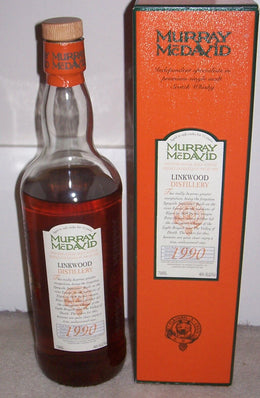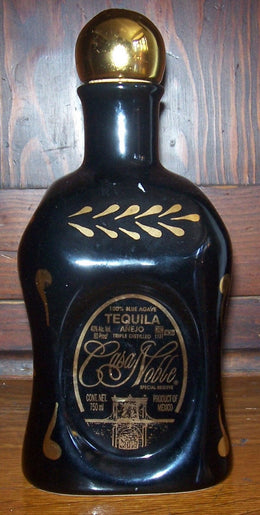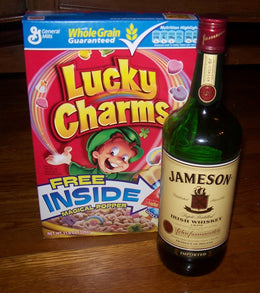
(Image Source: Gear Patrol)
I'm generally a scotch drinker when it comes to whiskey, but I've been enjoying drinking bourbon lately. Since it is May, the month of mint juleps and the Kentucky Derby, I thought I'd give a few tips about bourbon and some of my favorites.
What is Bourbon?
Here is a very basic definition.
First, the obvious: bourbon is a type of whiskey, a spirit distilled from a mix, or "mash," of grains and aged in oak barrels.
Bourbon is made from a mix of grains composed of at least 51% corn and aged in charred new oak barrels. Contrary to popular belief, whiskey does not have to be made in Kentucky, though it gets its name from Bourbon County, Kentucky and most bourbons are, in fact, made in Kentucky (though I don't believe any are made in Bourbon County).
What does bourbon taste like?
Generally, the taste of whiskey, any whiskey, is based on three factors: (1) what kinds of grains it is made from; (2) what kind of barrels it is aged in (as noted above, all bourbon is aged in charred new oak barrels); and (3) how long it is aged.
As bourbon is made from corn, which has a higher sugar content than most grains used in whiskey production, it tends to have a sweet, syrupy taste. It's not that it tastes surgary, like say a liqueur, more that it has an underlying sweetness as compared to other whiskies, such as rye or scotch. That corn-flavor is, to me, the essence of bourbon.
How do you drink bourbon?
Well, for the kind of bourbon I'm talking about, you drink it straight or with a dash of water to get the maximum flavor (though Maker's Mark and Woodford Reserve, which I mention below, make a fine mint julep). When I talk about any whiskey, I'm talking about a drink you sip and enjoy slooowly and in moderation.
What are some good bourbons?
If you have never tried bourbon before, you should try some of the basic brands to get a feel for what bourbon tastes like. Jim Beam is the biggest selling bourbon in the US, but I prefer Wild Turkey. Then, move up a level to Maker's Mark and Woodford Reserve, two excellent mid-level bourbons.
Once you get into bourbon, lots of people will point you to the Jim Beam small batch collection: Knob Creek, Baker's, Booker's and Basil Hayden. I'm not thrilled with these very popular and heavily marketed bourbons. I've tried them all and I feel that they lack depth of flavor -- there is not enough distinct about them, and they have the air of a giant corporation (Jim Beam) trying to pretend it is a small-time artisan. All in all, I would take Maker's or Woodford Reserve over anything in the small batch collection.
For my money, I have found that the most important two words in bourbon are Buffalo Trace. Buffalo Trace is a distillery that makes 17 different lines of bourbon (well, bourbon and a few rye whiskies). The three Buffalo Trace bourbons I've been lucky enough to try have been the three best bourbons I've had, which has given me enormous confidence in this label. The flavors are deep and complex, often subtle, and each bourbon has its own character. The only problem is that the Buffalo Trace whiskies are not widely or consistently available. The best Southern California source for bourbons I've found is Mission Liquors in Pasadena.
THE BOURBONS:
Eagle Rare, 10 years old. Eagle Rare is one of the most available of the BT bourbons in Southern California. Eagle Rare is like a standard bourbon but with an extra something special. The tastes are all the familiar corny flavors of bourbon but with a subtler edge compared to a Maker's or Woodford. There is a muting of the corn that gives it a pleasant taste, and it smells delightfully floral and caramelly.
Buffalo Trace. The BT standard bottling is probably my favorite of the three. The good news is it goes for only $25. The bad news is I have never seen it in California, and I had to have a friend bring it in from Tennessee via a meet-up in Florida, allowing him to fully realize any prohibition era rum-runner (bourbon-runner?) fantasies he may have had. BT has a powerful rye flavor. While corn has to make up 51% of bourbon (and in good bourbons, is usually much more), the additional 49% is up for grabs and it's clear that this bottling fills it in with no small amount of rye. Unlike corn, rye has a strong, spicy taste; it will make you think of a spice cabinet - nutmeg, allspice, maybe even cinnamon or pepper. I'm a fan of rye, and I think this bourbon has a great corn/rye balance, making it less sweet and more interesting than other bourbons.
George T. Stagg. George T. Stagg is often viewed as BT's best bourbon and, by some, as the world's best bourbon. Stagg is an alcoholic powerhouse, weighing in at 65-70% alcohol (the one I tried was 65.9%). For comparison, standard Scotch is about 40-45%, high alcohol cask strength scotch is 50-55% and standard Bourbon is around 45-50%. With Stagg, you feel the burn! There is clearly a lot going on in Stagg. There are layers upon layers of flavor, but the alcoholic content is so great that it kills off some of the subtleties that I enjoy most in the other BT offerings. Even with water added, I feel there is an integration of alcohol and flavor that is missing. Stagg is tough to find and will cost you in the $50-60 range.
There are a number of highly regarded Buffalo Trace bourbons I haven't yet tried, including the WL Weller, Van Winkle and Blanton's lines. I would have loved to add them to this report, but it turns out that doing a bourbon round-up is much more expensive than a doughnut round-up; who knew?
What is Bourbon?
Here is a very basic definition.
First, the obvious: bourbon is a type of whiskey, a spirit distilled from a mix, or "mash," of grains and aged in oak barrels.
Bourbon is made from a mix of grains composed of at least 51% corn and aged in charred new oak barrels. Contrary to popular belief, whiskey does not have to be made in Kentucky, though it gets its name from Bourbon County, Kentucky and most bourbons are, in fact, made in Kentucky (though I don't believe any are made in Bourbon County).
What does bourbon taste like?
Generally, the taste of whiskey, any whiskey, is based on three factors: (1) what kinds of grains it is made from; (2) what kind of barrels it is aged in (as noted above, all bourbon is aged in charred new oak barrels); and (3) how long it is aged.
As bourbon is made from corn, which has a higher sugar content than most grains used in whiskey production, it tends to have a sweet, syrupy taste. It's not that it tastes surgary, like say a liqueur, more that it has an underlying sweetness as compared to other whiskies, such as rye or scotch. That corn-flavor is, to me, the essence of bourbon.
How do you drink bourbon?
Well, for the kind of bourbon I'm talking about, you drink it straight or with a dash of water to get the maximum flavor (though Maker's Mark and Woodford Reserve, which I mention below, make a fine mint julep). When I talk about any whiskey, I'm talking about a drink you sip and enjoy slooowly and in moderation.
What are some good bourbons?
If you have never tried bourbon before, you should try some of the basic brands to get a feel for what bourbon tastes like. Jim Beam is the biggest selling bourbon in the US, but I prefer Wild Turkey. Then, move up a level to Maker's Mark and Woodford Reserve, two excellent mid-level bourbons.
Once you get into bourbon, lots of people will point you to the Jim Beam small batch collection: Knob Creek, Baker's, Booker's and Basil Hayden. I'm not thrilled with these very popular and heavily marketed bourbons. I've tried them all and I feel that they lack depth of flavor -- there is not enough distinct about them, and they have the air of a giant corporation (Jim Beam) trying to pretend it is a small-time artisan. All in all, I would take Maker's or Woodford Reserve over anything in the small batch collection.
For my money, I have found that the most important two words in bourbon are Buffalo Trace. Buffalo Trace is a distillery that makes 17 different lines of bourbon (well, bourbon and a few rye whiskies). The three Buffalo Trace bourbons I've been lucky enough to try have been the three best bourbons I've had, which has given me enormous confidence in this label. The flavors are deep and complex, often subtle, and each bourbon has its own character. The only problem is that the Buffalo Trace whiskies are not widely or consistently available. The best Southern California source for bourbons I've found is Mission Liquors in Pasadena.
THE BOURBONS:
Eagle Rare, 10 years old. Eagle Rare is one of the most available of the BT bourbons in Southern California. Eagle Rare is like a standard bourbon but with an extra something special. The tastes are all the familiar corny flavors of bourbon but with a subtler edge compared to a Maker's or Woodford. There is a muting of the corn that gives it a pleasant taste, and it smells delightfully floral and caramelly.
Buffalo Trace. The BT standard bottling is probably my favorite of the three. The good news is it goes for only $25. The bad news is I have never seen it in California, and I had to have a friend bring it in from Tennessee via a meet-up in Florida, allowing him to fully realize any prohibition era rum-runner (bourbon-runner?) fantasies he may have had. BT has a powerful rye flavor. While corn has to make up 51% of bourbon (and in good bourbons, is usually much more), the additional 49% is up for grabs and it's clear that this bottling fills it in with no small amount of rye. Unlike corn, rye has a strong, spicy taste; it will make you think of a spice cabinet - nutmeg, allspice, maybe even cinnamon or pepper. I'm a fan of rye, and I think this bourbon has a great corn/rye balance, making it less sweet and more interesting than other bourbons.
George T. Stagg. George T. Stagg is often viewed as BT's best bourbon and, by some, as the world's best bourbon. Stagg is an alcoholic powerhouse, weighing in at 65-70% alcohol (the one I tried was 65.9%). For comparison, standard Scotch is about 40-45%, high alcohol cask strength scotch is 50-55% and standard Bourbon is around 45-50%. With Stagg, you feel the burn! There is clearly a lot going on in Stagg. There are layers upon layers of flavor, but the alcoholic content is so great that it kills off some of the subtleties that I enjoy most in the other BT offerings. Even with water added, I feel there is an integration of alcohol and flavor that is missing. Stagg is tough to find and will cost you in the $50-60 range.
There are a number of highly regarded Buffalo Trace bourbons I haven't yet tried, including the WL Weller, Van Winkle and Blanton's lines. I would have loved to add them to this report, but it turns out that doing a bourbon round-up is much more expensive than a doughnut round-up; who knew?
Image and text courtesy of Sku.

Sku eats, drinks and is merry in the Koreatown neighborhood of Los Angeles and beyond.







